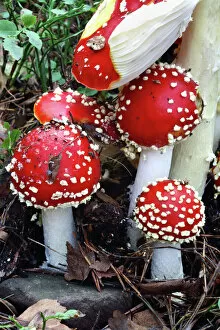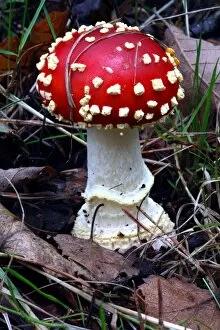Mycorrhiza Collection
"Mycorrhiza: The Hidden Partnership Beneath Our Feet" In the enchanting world of nature
All Professionally Made to Order for Quick Shipping
"Mycorrhiza: The Hidden Partnership Beneath Our Feet" In the enchanting world of nature, there exists a fascinating symbiotic relationship between plants and fungi known as mycorrhiza. This captivating image, captured through a Scanning Electron Micrograph (SEM), unveils the intricate beauty of this connection. At a magnification of x700, we witness the mesmerizing sight of mycorrhizal fungus entwined within plant roots. These branching threads of fungus mycelium thrive in organic soil, forming an underground network that stretches far and wide. They act as nature's silent architects, constructing bridges for communication and nutrient exchange between plants. This particular photograph showcases the remarkable RBG18-1251 species of mycorrhizal fungi. Its delicate structure resembles an ethereal dance frozen in time—a testament to the wonders hidden beneath our feet. Mycorrhiza plays a vital role in maintaining ecosystem balance by enhancing plant growth and resilience. It acts as an extension to their root system, enabling them to access nutrients beyond their reach while providing protection against pathogens. Amongst these diverse fungal partners lies the infamous Fly agaric fungi—known for its vibrant red cap with white spots—an iconic symbol often associated with fairy tales and folklore. However, it is essential to note that not all fly agaric fungi are beneficial; some can be deadly like Death cap fungi. Even Japanese sago palm roots have embraced this harmonious alliance with mycorrhizal fungus—a testimony to its widespread occurrence across various plant species worldwide. As we delve into this microscopic realm through light micrographs showcasing root fungus treatments or exploring different types such as bare-root mycorrhizal fungi treatment C013/7276—the complexity and importance become evident. Mycorrhiza serves as a reminder that even amidst vast landscapes or humble gardens lie interconnected networks fostering life's resilience.











